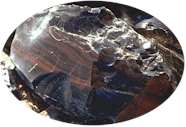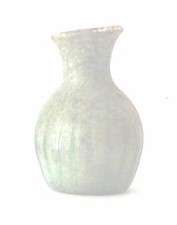Glass and mirrors - A rich history
Glass history Part 1
5000 BC - AD 100
» The discovery of glass

Glass probably exists since the beginnings of time, formed as a result of high temperature .... Glass history »»
Glass history Part 2
AD 100 - Industrial Revolution
» The Roman influence

The Romans have made it possible that the knowledge of making glass could be spread so quick and in such a large area. With its conquests, trade relations, road building, ....»»
Glass history Part 3
Industrial Revolution - Present day
» A craft becomes industry

It was not until the latter stages of the Industrial Revolution, however, that mechanical technology for mass production and in-depth scientific research into the relationship between the composition of glass and its physical qualities began to appear in the industry.....»»
The history of mirrors

Mirrors are used by man long befor the discovery of making glass. Made of metal ....»»
Glass and Mirrors.
The history of Glass - Part 1
Natural Glass - Obsidian
Glass probably exists since the beginnings of time, formed as a result of high-temperature when certain types of rocks melt. Volcanic eruptions, lightning strikes and even the impact of meteorites can trigger this effect.
Even on the moon a natural form of glass can be found. One of the samples of moonrock, brought to earth by the crew of the Apollo-14, contains glass.

Cutting tools or spearheads made of obsidian (a natural glass of volcanic origin also known as hyalopsite or Iceland agate) and tektites (naturally-formed glasses of other origin), are believed to be used by Stone-age man.
5000 BC.
» The discovery of glassThe ancient-Roman historian Pliny (AD 23-79), describes how Phoenician merchants transporting stone, actually discovered glass accidentally, in the region of Syria around 5000 BC. After landing on a shore, the merchants placed cooking pots on blocks of nitrate placed by their fire. The intense heat of the fire caused the blocks eventually to melt and mix with the sand of the beach and formed an opaque liquid. Glass.
A brief explanation and the origins of glass made by man.
3500 BC.
» A new craft is born.In Eqypt and Eastern Mesopotamia, non-transparent glass beads made by man were found, that are thought to date back to around 3500 BC. In central Mesopotamia, around the third millennium, basic raw materials of glass were being used principally to produce glazes on pots and vases. The discovery may have been coincidental, with calciferous sand finding its way into an overheated kiln and combining with soda to form a coloured glaze on the ceramics. These products and the new art of making glass, was then spread by Phoenician merchants and sailors along the coasts of the Mediterranean.
16th century BC
» Early hollow glass production.The oldest fragments of glass vases (evidence of the origins of the hollow glass industry), however, date back to the 16th century BC and were found in Mesopotamia. Hollow glass production was also evolving around this time in Egypt, and there is evidence of other ancient glassmaking activities emerging independently in Mycenae (Greece), China and North Tyrol.
1500 BC
After 1500 BC, Egyptian craftsmen are known to have begun developing a method for producing glass pots by dipping a core mould of compacted sand into molten glass and then turning the mould so that molten glass adhered to it. While still soft, the glass-covered mould could then be rolled on a slab of stone in order to smooth or decorate it.
The earliest examples of Egyptian glassware are three vases bearing the name of the Pharaoh Thoutmosis III (1504-1450 BC), who brought glassmakers to Egypt as prisoners following a successful military campaign in Asia.
9th century BC
Nothing much happens and there is little evidence of further evolution until the 9th century BC, when glassmaking revived in Mesopotamia. Over the following 500 years, glass production centred on Alessandria, from where it is thought to have spread to Italy.
650 BC
Tablets from the library of the Assyrian king Ashurbanipal (669-626 BC) contain the first glassmaking "manual". This manual dates back to around 650 BC. Instructions on how to make glass are engraved on it .
27 BC - AD 14
» Starting to blow glassA major breakthrough in glassmaking was the discovery of glassblowing some time between 27 BC and AD 14. Syrian craftsmen from the Sidon-Babylon area invented a long thin metal tube used in the blowing process, this tube has changed very little since then. In the last century BC, the ancient Romans then began blowing glass inside moulds, greatly increasing the variety of shapes possible for hollow glass items.
Glass history Part 2
AD. 100 - Industrial Revolution
Glass history Part 3
Industrial Revolution - Present day